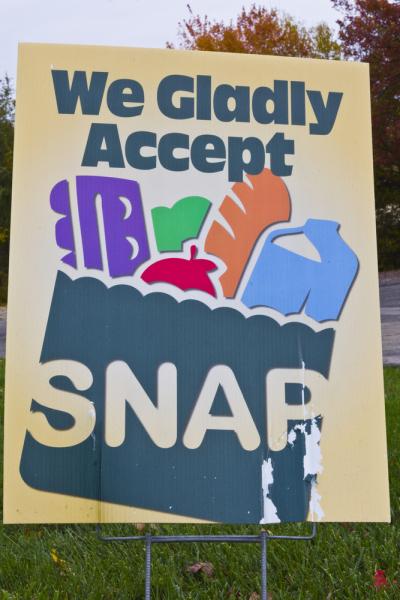People getting federal food assistance from the SNAP program (Supplemental Nutrition Assistance Program), formerly called Food Stamps, can use them to purchase a variety of items as specified in the program instructions:
SNAP benefits can only be used for food and for plants and seeds to grow food for your household to eat. SNAP benefits cannot be used to buy:
Any nonfood item, such as pet foods; soaps, paper products, and household supplies; grooming items, toothpaste, and cosmetics
Alcoholic beverages and tobacco
Vitamins and medicines
Any food that will be eaten in the store
Hot foods
Given these restrictions, there remains a wide variety of items SNAP beneficiaries can choose to purchase. And of course they can use their own funds to buy items not approved for SNAP. The question is, what do these folks buy? Does their use of these benefits result in better nutrition? A recent study in the American Journal of Clinical Nutrition used electronic purchase data to investigate that question.
Drs. Anna H. Grummon and Lindsey Smith Taillie from the University of North Carolina, Chapel Hill used data from the Nielsen Homescan Panel that samples about 60,000 households across the US: participants used digital scanners to record the data on packaged products. The investigators compared the purchases of households using SNAP benefits with those of two other groups: households with similar incomes (no more than 130 percent of the Federal poverty level); and households with higher incomes. Using that data they then compared the nutritional quality of the purchases of these latter groups with that of the group using SNAP benefits. To be clear, these data represent all the packaged foods purchased, not just those bought with the SNAP allowances.
The investigators controlled for numerous demographic variables such as household size, number of children, and highest educational attainment in the household. They found that the SNAP households were significantly larger on average, and included significantly more children than the other two groups. The SNAP household members also had significantly lower levels of educational attainment than did the other groups.
Main categories of foods included were: fruits, processed meats, "junk foods" ( desserts, salty snacks, sweeteners and toppings, candy and gum), starchy and non-starchy vegetables, legumes, nuts and dairy. The foods chosen by participants were also analyzed for nutrient content.
Overall, the households in all groups had low purchases of fruit, vegetables, and fiber, but high average purchases of "junk foods", saturated fats, and sodium. In addition, the SNAP participants had significantly greater purchases of calories from sugar-sweetened beverages, and sodium than did either the income-eligible but non-participants or the higher income group. In contrast, SNAP participants' purchases of 100 percent juices were significantly lower than those of the other groups.
While these differences are concerning, it's important to recognize that food purchases don't necessarily translate directly into food consumption: not all foods bought are consumed, and these data don't capture foods eaten in restaurants. Still, these data suggest that in addition to receiving financial assistance, SNAP participants could well benefit from additional information on making wiser food purchases. The authors noted:
"In SNAP, potential policy levers include education, incentives, and restrictions. For example, several jurisdictions have proposed policies to end SNAP subsidies for items such as SSBs, candy, and junk foods, and the US House Committee on Agriculture recently debated the pros and cons of restricting SNAP benefits."
But whether or not such actions would really impact shoppers' choices isn't clear, since they could still use non-SNAP funds to purchase such items. We need more information on how to motivate consumers to make more healthful selections — whether they are SNAP recipients or not.




